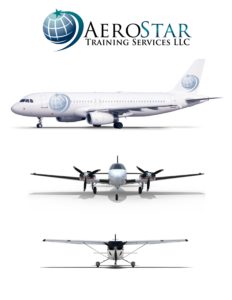Ever heard the old adage “you get what you pay for”? The reason it’s an old adage is because it’s a true one.
 There are a lot of schools who offer type ratings and advanced flight crew training. AeroStar is one of about a dozen schools approved to provide type ratings under FAR 142. However, not all these schools are built the same. Unfortunately, most are not focused on helping your career dreams take flight.
There are a lot of schools who offer type ratings and advanced flight crew training. AeroStar is one of about a dozen schools approved to provide type ratings under FAR 142. However, not all these schools are built the same. Unfortunately, most are not focused on helping your career dreams take flight.
It’s sad that many of these schools prey on the passions and career aspirations of aviation enthusiasts for selfish reason.
Many schools care only about their “bottom line” rather than their customer’s career success. One key way to help you identify the school’s motivations is to look at the qualifications and background of the people who own them.
Are they pilots? Have they ever been professional pilots? Do they really know anything about training pilots? How can they help you achieve what they themselves have never accomplished?
Most type rating schools are owned by career business people and some by aerospace engineers. These owners have never pursued the dream of being an airline pilot. They have never experienced what it’s like to train to airline standards nor do they have a proven track record of successfully flying airplanes.
To learn about the school’s owners check out their website, call and ask or inquire via e-mail.
Sure they deliver what their customers pay for but all too often this is nothing more than the bare minimum. These companies share an unspoken motto to get training done cheaply and get clients in and out as quickly as possible – the cheaper the better. To them a marginal pass rate is good enough. To them their clients are just numbers and dollars not fellow pilots.
If you’re looking for business advice, talk to a business man. If you want really cool aviation software, talk to an aviation software engineer. However, if you want to train to be an airline pilot then enroll in a school founded and operated by career pilots – pilots who care about your success, pilots who have a proven track record of helping others fulfill their career dreams.
No, AeroStar is not the cheapest. Our programs frequently cost more than some while less than others. Why? Because we care enough to offer the best training at the best value! Our fee structure has allowed us to price competitively while recruiting and retaining the best instructors, offering the best simulators, deploying the best learning tools and creating the best courses. Our pricing reflects our belief that quality and experience matters. It reflects that you get what you pay for and that the customer expects a return on their investment.
AeroStar Training Services, LLC was founded by career airline pilots with thousands of hours of flight experience. They created their unique and highly successful training programs to help others succeed the way they had.
At AeroStar we don’t create software nor do we build simulators, we train professional airline pilots. Our organization utilizes the best training tools available to deliver the best training experience. Each AeroStar instructor has been hand-picked based on his/her experience, talent, and a passion for teaching.
Our bottom line is that we care about the customer’s success. Our motto is to “help your aviation career dreams take flight.”
 Here are some of the sites that list jobs for these types of pilots, as well as individual airlines sites.
Here are some of the sites that list jobs for these types of pilots, as well as individual airlines sites.
 There are a lot of schools who offer type ratings and advanced flight crew training. AeroStar is one of about a dozen schools approved to provide type ratings under FAR 142. However, not all these schools are built the same. Unfortunately, most are not focused on helping your career dreams take flight.
There are a lot of schools who offer type ratings and advanced flight crew training. AeroStar is one of about a dozen schools approved to provide type ratings under FAR 142. However, not all these schools are built the same. Unfortunately, most are not focused on helping your career dreams take flight.





 The career path for pilots has changed in the last few years. The career path used to be something like this:
The career path for pilots has changed in the last few years. The career path used to be something like this:
 I recently attended an Airline job fair and stumbled upon something I wasn’t expecting – Reduced minimums for pilots with type ratings!
I recently attended an Airline job fair and stumbled upon something I wasn’t expecting – Reduced minimums for pilots with type ratings!